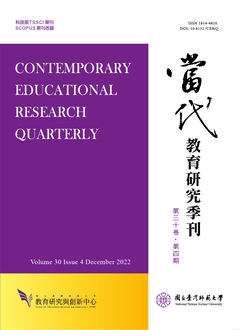

本研究採用教學觀察與訪談、問卷調查的方法,來瞭解教師在攜手計畫數學補救教學中,其課程決定與教學實施的情況。有8 位、300 位高屏地區教師分別接受觀察訪談與問卷調查。在觀察與訪談中發現,教師補救教學時,以使用概念與計算的問題為主,先進行全班例題的講解,再讓學生個別練習與進行指導,以達熟練的目標。在實施過程中教師表示會根據學生程度來決定課程,但由於學生程度落差大,所以採用學生原年級的數學教科書為補救教學之主要內容,而學生程度的落差也讓教師在教學時感到困難。問卷調查的結果與觀察訪談的結果相當一致,約8 成左右教師表示在課程決定和教學實施上有困難,未來研究者宜針對補救課程教材與教學策略兩方面來提供現場教師的協助。
This study aimed at understanding the curriculum decision and instruction implementation of mathematics remedial instruction (MRI) in elementary schools. Classroom observation, interview, and survey data were collected from 8 case teachers, and 300 teachers who taught the After-School Alternative Program (ASAP) in Kaohsiung and Pingtung County of Southern Taiwan, respectively. Analyses of classroom observation and interview data indicated that the main foci of MRI were conceptual understanding and algorithmic practice. Teachers demonstrated how to solve an example task, and thenprovided similar tasks for students to practice while providing individual guidance for students as needed. Mastering mathematics skills was the primary goal of MRI. Teachers expressed that they diagnosed ASAP students’ mathematical competence before selecting MRI curriculum. However, due to the diversity in students’ competence levels, they chose the original mathematics textbook as teaching materials. Teachers also struggled with addressing the different learning needs of students, and they needed more time to implement individualized instruction. Survey responses revealedconsistency with findings from observations and interviews. About 80% of teachers reported difficulties in decisions related to curriculum materials and instruction implementation of MRI. In the future, researchers should develop curriculum materials and instructional strategies of MRI that assist teachers in implementation of teaching materials and methods.

本著作係採用創用 CC 姓名標示-非商業性 3.0 台灣 授權條款授權.
本刊國立台灣師範大學教育研究與創新中心
106台北市和平東路一段162號 | 電話: 02-7749-3670 | E-mail: cerecerq@gmail.com
教創中心 | 師大 | 電子報 | 線上投審系統
本刊由國家科學及技術委員會人文社會科學研究中心補助經費
© 2014 CERI-NTNU
